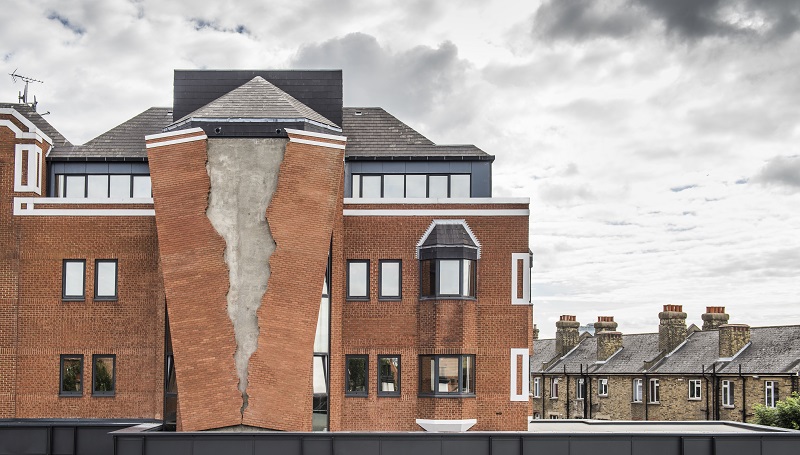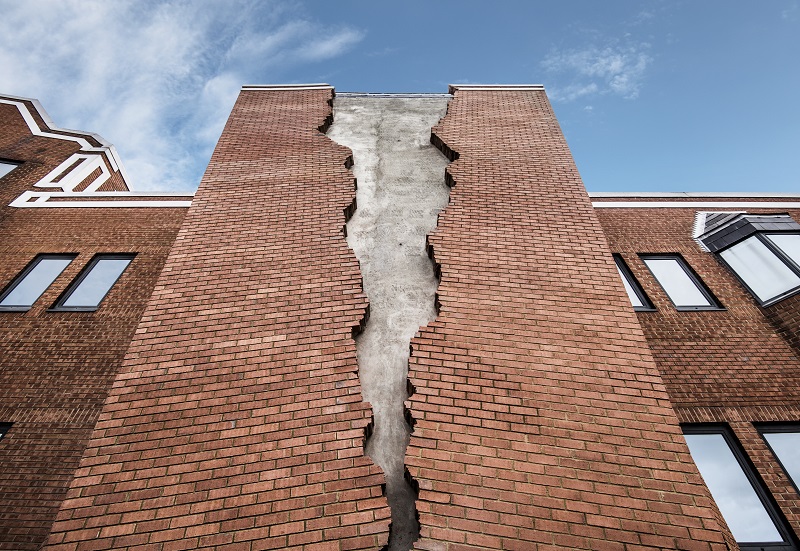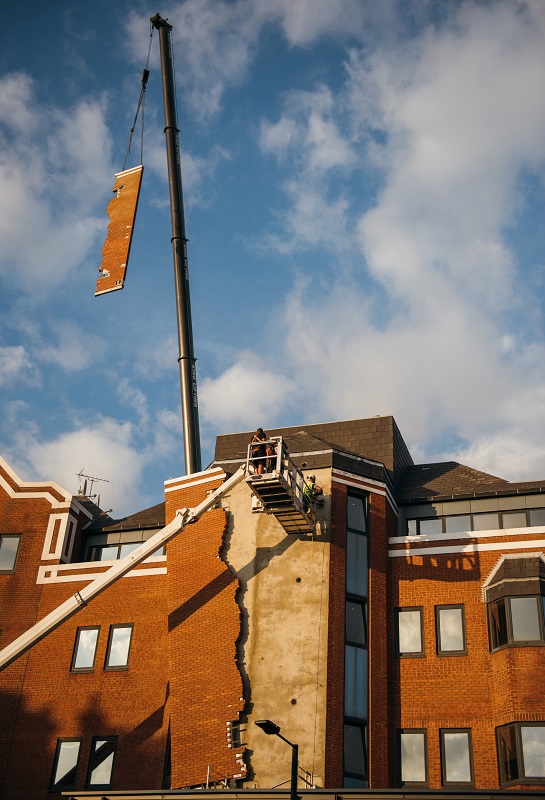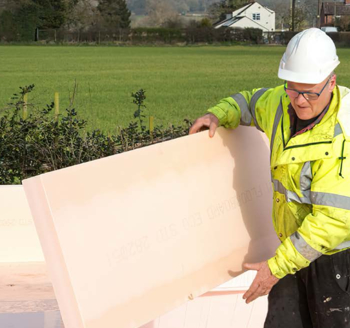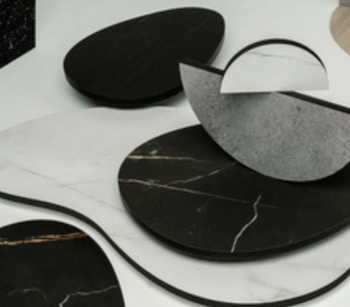Six pins and half a dozen needles
On 1 August 2017, British artist Alex Chinneck unveiled his first permanent public installation – a giant rip in the brick façade of a London building.
Titled ‘Six Pins and half a Dozen Needles’ the surrealist installation is located on the site of Assembly London, Hammersmith, a former publishing house. Reaching a height of 20 m, and weighing 10 tonnes, the installation is designed to appear as though the building’s red brick façade has cracked in half. Chinneck intended the split to resemble a page ripped from a book.
The product of 14 months’ work collaborating with structural engineers, steelworkers and brick-makers, the piece consists of 4,000 bricks and more than 1,000 stainless steel components. It is formed on a steel framework that is bolted and welded to the building. The ‘rip’ is achieved by using the stainless steel components together with hundreds of unique bricks which were individually cut by hand and water.
The installation process took 18 hours, with each section having to be lifted 75 m to clear the neighbouring buildings on the site.
Alex Chinneck said:
“The work was conceived to engage people in a fun and uplifting way. Although we use real brick, it was designed with a cartoon-like quality to give the sculpture an endearing artifice and playful personality. I set out to create accessible artworks and I sincerely hope this becomes a popular landmark for London and positive experience for Londoners.”
Chinneck is no stranger to the surreal spectacle that merges architecture with sculpture, with previous works including a melting house constructed from wax bricks, and a house façade that appeared to have slumped into the street in Margate.
Alex Chinneck’s ‘Six pins and half a dozen needles’ is a permanent installation and can be viewed at Assembly London, 77 Fulham Palace Road, London, W6 8JA.
Content and images courtesy of Alex Chinneck.
Images © Charles Emerson
[edit] Find out more
[edit] Related articles on Designing Buildings Wiki
Featured articles and news
The benefits of engaging with insulation manufacturers
When considering ground floor constructions.
Lighting Industry endorses Blueprint for Electrification
The Lighting Industry Association fully supports the ECA Blueprint as a timely, urgent call to action.
BSRIA Sentinel Clerk of Works Training Case Study
Strengthening expertise to enhance service delivery with integrated cutting-edge industry knowledge.
Impact report from the Supply Chain Sustainability School
Free sustainability skills, training and support delivered to thousands of UK companies to help cut carbon.
The Building Safety Forum at the Installershow 2025
With speakers confirmed for 24 June as part of Building Safety Week.
The UK’s largest air pollution campaign.
Future Homes Standard, now includes solar, but what else?
Will the new standard, due to in the Autumn, go far enough in terms of performance ?
BSRIA Briefing: Cleaner Air, Better tomorrow
A look back at issues relating to inside and outside air quality, discussed during the BSRIA briefing in 2023.
Restoring Abbotsford's hothouse
Bringing the writer Walter Scott's garden to life.
Reflections on the spending review with CIAT.
Retired firefighter cycles world to raise Grenfell funds
Leaving on 14 June 2025 Stephen will raise money for youth and schools through the Grenfell Foundation.
Key points for construction at a glance with industry reactions.
Functionality, visibility and sustainability
The simpler approach to specification.
Architects, architecture, buildings, and inspiration in film
The close ties between makers and the movies, with our long list of suggested viewing.
SELECT three-point plan for action issued to MSPs
Call for Scottish regulation, green skills and recognition of electrotechnical industry as part of a manifesto for Scottish Parliamentary elections.
UCEM becomes the University of the Built Environment
Major milestone in its 106-year history, follows recent merger with London School of Architecture (LSE).
Professional practical experience for Architects in training
The long process to transform the nature of education and professional practical experience in the Architecture profession following recent reports.






